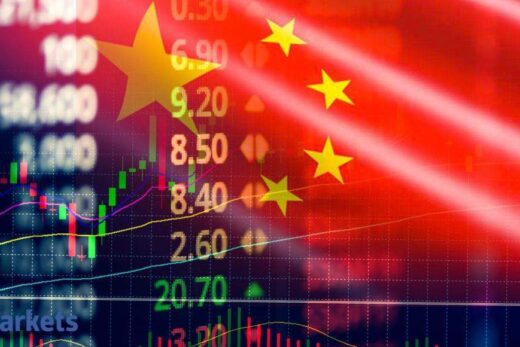The race to top of the emerging-market currency pack will be determined by central banks that are taking no chances with inflation. The trick is singling out those ready to turn rhetoric into action.
Recent winners are the Mexican peso, Brazilian real and Hungary’s forint — currencies whose central banks raised rates this month, protecting their relative yield advantage against accelerating prices and the prospect of rising U.S. rates. Attention now turns to Colombia, Turkey and Poland, where policy makers are due to set benchmark borrowing costs over the coming weeks.
Last week’s tightening drive jolted markets, with a gauge of currencies in the developing world rebounding from its biggest five-day slide in nine months, bolstered by a surprise rate increase in Mexico that lifted the peso almost 2 per cent on Thursday. In Hungary, the central bank suggested it could follow through with more hikes, propelling the forint to its biggest weekly gain in more than a month against the euro.
 Bloomberg
BloombergIt shows that even with the Federal Reserve set to keep rates near zero until 2023 — reducing the risk of outflows from the asset class — investors are placing a premium on countries taking a hawkish stance as the global economy comes roaring back.
“Quicker-than-expected monetary tightening is contributing to this rally,” said Sébastien Barbé, head of emerging-market strategy at Credit Agricole CIB. “Mexico surprisingly hiked, and now emerging-market investors are increasingly wondering who will be next.”
Aggregated rate increases from emerging-market central banks reached 205 basis points in June, up from an average of 109 in April and May, according to Credit Agricole. Brazil has led the way, more than doubling its benchmark rate, and financial markets pricing in more hikes there in 2021, spurring an almost 6 per cent gain in the real in June.
Wells Fargo is most bullish on the real and ruble, with the central banks in Brazil and Russia appearing “to be the two most hawkish” in developing economies, said New York-based strategist Brendan McKenna. The currencies are among the biggest gainers in emerging markets this year.
Forint Whipsawed
The desire for clarity on central banks’ tightening plans was evident in Hungary. Going long-forint against the euro is proving popular as Hungary begins its rate-hike cycle while the European Central Bank maintains its ultra-loose stance. Derivatives traders turned the most bullish on the currency pair since February 2020 last week.
While a split among economists and money-market traders over the size and pace of the central bank’s actions had whipsawed the forint in June, it’s still the biggest gainer in emerging-markets this quarter, after the real. Derivatives traders also boosted their bullish bets on the koruna to the highest since March 2020 after the Czech Republic become the second country in the European Union’s east to raise rates since the start of the pandemic.
Investors are on the lookout for other emerging markets that may raise borrowing costs as growth recovers from the pandemic-driven downturn. Danske Bank is adding a short-euro position against the zloty in its trading portfolio in anticipation of a hawkish pivot in July. A key risk to this trade: Poland has signaled it wants to keep monetary policy loose until the economic rebound is well under way, despite surging inflation.
Getting it right requires a balancing act from policy makers, who have to battle rising prices without stifling economic growth. “Many economies still have significant spare capacity and room for growth to catch up to pre-pandemic trend levels, as long as monetary and fiscal policy doesn’t get in the way,” said Lewis Jones, an emerging-market debt portfolio manager at William Blair Investment Management LLC in New York.
In the Price
And a lot is already priced in. Anything less than a 50-basis-point increase in Brazil and Russia could trigger a reversal in recent gains for both the real and the ruble, said Matthew Ryan, a senior market analyst at Ebury.
Hawkish rhetoric alone isn’t always sufficient, as the case of Turkey’s lira illustrates. Citigroup Inc. shorted the lira against the ruble in its model portfolio last week, even though Turkey’s central bank pledged to protect the currency. Investors remain concerned about its autonomy from political interference after President Recep Tayyip Erdogan fired his previous central bank governor in March. The lira is the worst performer among peers this year.
“Having the right institutional support or independence to deliver the policy tightening is also important to assess the credibility of the adjustment,” said Francesc Balcells, the London-based chief investment officer of emerging-market debt at FIM Partners. “We like the combination of currencies which are supported by responsive central banks in terms of fighting inflation, and solid balance-of-payments positions, enjoying all the while some sort of terms-of-trade tailwind.”
Colombia Decides
- Colombia’s central bank is forecast to keep its key interest rate steady at 1.75 per cent on Monday, and Bloomberg Economics expects the post-meeting statement, as well as minutes due on Wednesday, to reflect a neutral policy outlook
- Unemployment data for May, also scheduled for Wednesday, may show an increase, the economists said
- The Colombian peso is one of the top performers in emerging markets in the past month as analysts predict an increase in the benchmark rate in October
Xi Speaks
- China’s markets are likely to remain stable ahead of a planned speech by President Xi Jinping on Thursday to mark the 100th anniversary of the Communist Party. The remarks will be closely watched as a growing camp of analysts have started downgrading their growth forecasts
- “The overall macro backdrop is likely to turn less friendly for risk assets post the CCP’s centennial celebration in July,” Citigroup Inc. strategists wrote in a note this month. “Peak growth momentum may have passed us, with all major activity indicators missing expectations in May”
- The People’s Bank of China is expected to keep injecting cash into the banking system to ease concerns about liquidity conditions ahead of the quarter-end. It increased its short-term cash injection for the first time since March last Thursday
- Investors will get an update on manufacturing and services sentiment in China on Wednesday, when official purchasing manager indexes are due. Gauges for other emerging Asian countries including India, Indonesia, the Philippines, Malaysia and Thailand will be released on Thursday
What Else to Watch
- A slew of South Korean data due this week will be on investors’ radar after Bank of Korea Governor Lee Ju-yeol said last week that policy normalization is in the pipeline this year. June trade numbers on Thursday are likely to show a moderation in export growth from the rapid pace in April and May, according to Bloomberg Economics; data from the first 20 days of the month showed double-digit gains in exports, though a slower pace from recent months suggests the days of outsized increases may be over. The nation will also report industrial production for May on Wednesday and consumer prices for June on Friday
- Vietnam is due to report data on second-quarter gross domestic product as well as trade, consumer prices, retail sales and industrial production on Tuesday; Malaysia and Thailand will also announce trade figures on Monday and Wednesday, respectively
- Russia will unveil a bundle of data on Wednesday, including CPI and the unemployment rate. “The figures should show the recovery remained robust ahead of a June spike in virus cases and deaths,” Bloomberg Economics said in a report
- Polish inflation data on Wednesday may provide clues on the central bank’s monetary policy path
- In Brazil, traders will watch data showing the April national jobless rate and May budget balance on Wednesday. Trade balance statistics through the third week of June are expected to flag another strong surplus, according to Bloomberg Economics. A reading for May industrial production on Friday will probably show output regained some of the ground lost in the previous three months
- On Thursday, Chile’s May economic activity index is expected to show a rise from a year earlier amid expansive fiscal and monetary policies, according to Bloomberg Economics. Retail sales for the same month could reflect recovering household consumption
- Peru will probably flag an increase in its June consumer price inflation numbers on Thursday, driven by higher food and energy costs.
- Traders will monitor a reading of Argentina’s economic activity index for April on Tuesday, looking for signs of a comeback compared with earlier in the pandemic



